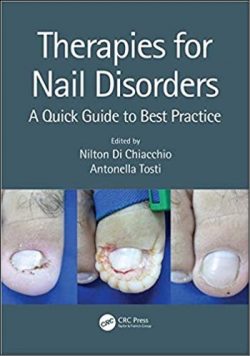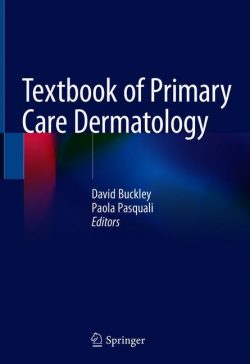Contact urticaria is an immediate but transient localized swelling and redness that occurs on the skin after direct contact with an offending substance. It is caused by a variety of compounds, such as foods, preservatives, fragrances, plant and animal products, metals, and rubber latex and the mechanism by which these provoke an immediate urticarial rash at the area of contact can be divided into two categories: non-immunological contact urticaria and immunological (allergic) contact urticaria. Non-immunological contact urticaria typically causes mild localized reactions that clear within hours, e.g. stinging nettle rash. This type of urticaria occurs without prior exposure of a patient’s immune system to an allergen. Immunological contact urticaria occurs most commonly in atopic individuals (people who are prone to allergy). Hence prior exposure to an allergen is required for this type of contact urticaria to occur.
While there have been other texts written on the subject over the last decade, this book is intended as an easily accessible guide for dermatologists and residents, as well as general practitioners, summarizing the most important concepts that will help physicians identify the signs and symptoms of Contact Urticaria Syndrome in their daily clinical practice. Each chapter is laid out in the following format: Concepts, Tools and Algorithms of Diagnosis and Management, a Clinical Case for each entry, and Recommendations. Additionally, the Volume Editors have worked to provide a global approach to this syndrome using internationally standardized requirements for diagnosis.
Table of Contents
Contact Urticaria Syndrome: Diagnosis and Management
Editors: Ana M. Giménez-Arnau, Howard Maibach
Chapter 1
Essentials and Updated Concepts
Ana M. Giménez-Arnau, Howard Maibach
Chapter 2
Basic Epidemiology Concepts Relevant in Contact Urticaria
Jose Hernán Alfonso
Chapter 3
Occupational Relevance of Contact Urticaria Syndrome
Jose Hernán Alfonso
Chapter 4
Clinical Diagnosis of Immediate Contact Skin Reactions
Ana M. Giménez-Arnau, Marlene Isaksson
Chapter 5
Oral Allergy Syndrome: Rethinking Concepts
Jorge Sánchez, Ricardo Cardona
Chapter 6
Wheals and Eczema: Pathogenic Mechanism in Immediate Contact Reactions
Eduardo Rozas-Muñoz, Esther Serra-Baldrich
Chapter 7
Immediate Skin Contact Reactions Induced by Proteins
Kayria Muttardi, Emek Kocatürk
Chapter 8
Immediate Skin Contact Reactions Induced by Chemicals
Elena Giménez-Arnau
Chapter 9
Immunoglobulin E, Pathogenic Relevance in Immediate Contact Reactions
Maria Estela Martinez Escala, Leah Ariella Kaplan, Ana M. Giménez-Arnau
Chapter 10
Diagnostic Methods: Cutaneous Provocation Tests in Contact Urticaria Syndrome
Sarah H. Wakelin
Chapter 11
Molecular Diagnosis in Contact Urticaria Caused by Proteins
Joaquin Sastre
Chapter 12
Preventive Measures for Occupational Induced Immediate Contact Reactions
Jose Hernán Alfonso
Chapter 13
Management and Treatment of Contact Urticaria Syndrome
Gustavo Deza, Ana M. Giménez-Arnau
Chapter 14
Management of Contact Urticaria through Clinical Cases
Tabi A. Leslie, David Orton
Dr. Ana Giménez-Arnau is a Consultant in Dermatology and Associate Professor in the Department of Dermatology at the University of Barcelona.
Dr. Howard Maibach is a professor in the Department of Dermatology at UCSF and is an expert in contact and occupational dermatitis and His specialties are dermatotoxicology, or skin exposure toxicity; allergies and skin disorders; and dermatopharmacology or the study of medications for skin disorders. Dr. Maibach has been on the editorial board of more than 30 scientific journals and is a member of 19 professional societies including the American Academy of Dermatology, San Francisco Dermatological Society and the Internal Commission on Occupation Health.
Easily accessible guide for dermatologists and residents, as well as general practitioners, summarizing the most important concepts that will help physicians identify the signs and symptoms of Contact Urticaria Syndrome in their daily clinical practice
Each chapter is laid out in the following format: Concepts, Tools and Algorithms of Diagnosis and Management, a Clinical Case for each entry, and Recommendations
Provides a global approach to this syndrome using internationally standardized requirements for diagnosis
Part of the Updates in Clinical Dermatology series





